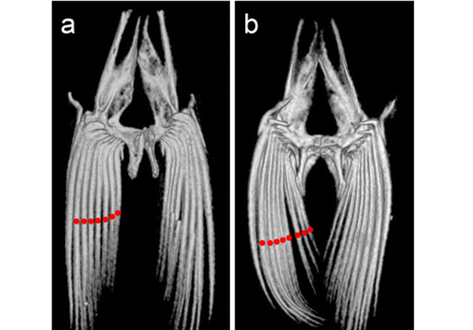The morphological diversity of Garra barreimiae

Garra barreimiae (Fowler and Steinitz, Bull Res Counc Isr 5B:262–289, 1956) is a freshwater fish that lives throughout the Hajar Mountains of Oman and the United Arab Emirates. Previously, four different genetic clades (West clade, Central Clade, North clade and East clade) have been identified within this species. This study observes morphological differences between these clades using morphometrics and meristics as well as micro CT imaging, further strengthening the assumption that the taxon of G. barreimiae should be restricted to one of the genetic clades detected. Although many morphometric and meristic characteristics are highly variable within the clades, the West clade fits the original description of G. barreimiae and is distinguishable by its higher number of fifteen to seventeen gill rakers on the lower limb of the first gill arch (compared to the other clades with ten to fourteen gill rakers), its seven branched pelvic fin rays (in contrary to the other clades with eight branched pelvic fin rays) and its number of vertebrae, with typically nineteen precaudal and one intermediate vertebrae, compared to eighteen precaudal and two intermediate vertebrae in the Central and North clade and seventeen precaudal and two intermediate vertebrae in the East clade.